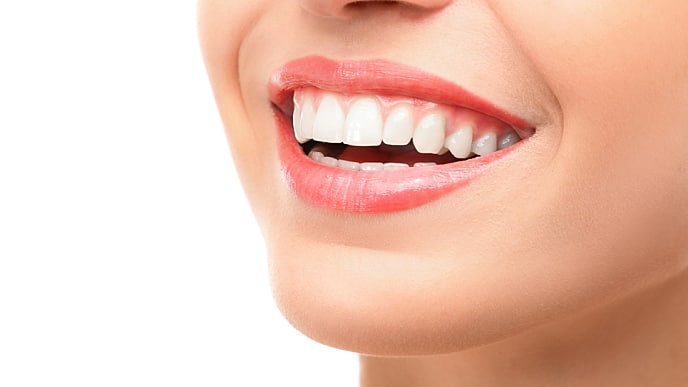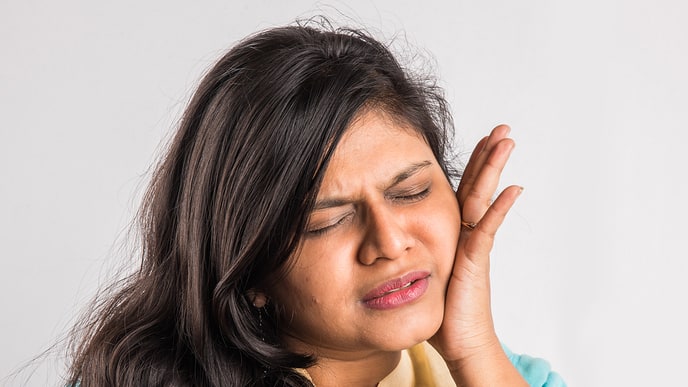1. Incisors
At the front of the mouth are eight thin, straight teeth called incisors – four at the top and four at the bottom – which bite into the food you eat and help you pronounce words as you speak. Incisors also support the lips.
2. Canines
On each side of the upper and lower incisors is a single canine tooth, making four in total. Dentists call these slightly pointed teeth cuspids, and like incisors, they cut or shear food and support the lips. Another function of the canines is to help guide all the teeth into place when the upper and lower jaw come together.
3. Premolars
Behind the canines are the premolars, or, as dentists call them, the bicuspids. Premolars have a flattened top and are used to chew food and maintain the height of the face. There are eight premolars in an adult's mouth: four on the top and four on the bottom.
4. Molars
Next to the premolars are the molars. These are your widest, flattest teeth, and there are 12 altogether: six in the upper jaw and six in the lower. According to Navpreet Kaur & Ajay Nagpal in the Dental Research Journal, wisdom teeth as the four molars at the back of both the lower and upper jaws, and they're the last to erupt during young adulthood. Cleaning wisdom teeth can be difficult because they are so far back in the mouth, but slim toothbrushes such as Colgate Super Flexi toothbrushes can help. Like premolars, molars are used for chewing food and to maintain the height of the face. Lower molars have two roots, while upper molars have three.
5. Supernumerary Teeth
Sometimes teeth develop outside of their normal process, and one example of this is supernumerary teeth. The normal tooth count in the adult mouth is 32, but more can appear; these are called supernumerary teeth. The article published by The Indian Journal of Dental Research suggests the most common type of supernumerary tooth is an extra incisor located between two central incisors, also known as a mesioden, according to a scientific journal titled "Diagnosis and Management of Supernumerary (Mesiodens)". The second-most common supernumerary tooth is an extra molar tooth, called a paramolar according to the Dental Resarch Journal. It's also possible to develop supernumerary canine teeth.
6. Natal Teeth
According to the European Journal of Dentistry, the natal/neonatal teeth occur unilaterally. Also called fetal teeth, natal teeth usually appear in the lower gum. Because they often have weak or nonexistent roots, natal teeth fall out easily, so doctors often advise having them removed to avoid the risk of inhaling the tooth. Natal teeth can also irritate or injure the baby's tongue or the mother while nursing. The presence of natal teeth is usually an isolated incident, but it can be a symptom of prevailing medical conditions as well.
It's essential to look after all types of teeth well and have regular dental checkups. With a full set of healthy teeth, people can eat and speak properly and maintain their confident smiles.
This article is intended to promote understanding of and knowledge about general oral health topics. It is not intended to be a substitute for professional advice, diagnosis or treatment. Always seek the advice of your dentist or other qualified healthcare provider with any questions you may have regarding a medical condition or treatment.
ORAL HEALTH QUIZ
What's behind your smile?
Take our Oral Health assessment to get the most from your oral care routine
ORAL HEALTH QUIZ
What's behind your smile?
Take our Oral Health assessment to get the most from your oral care routine













